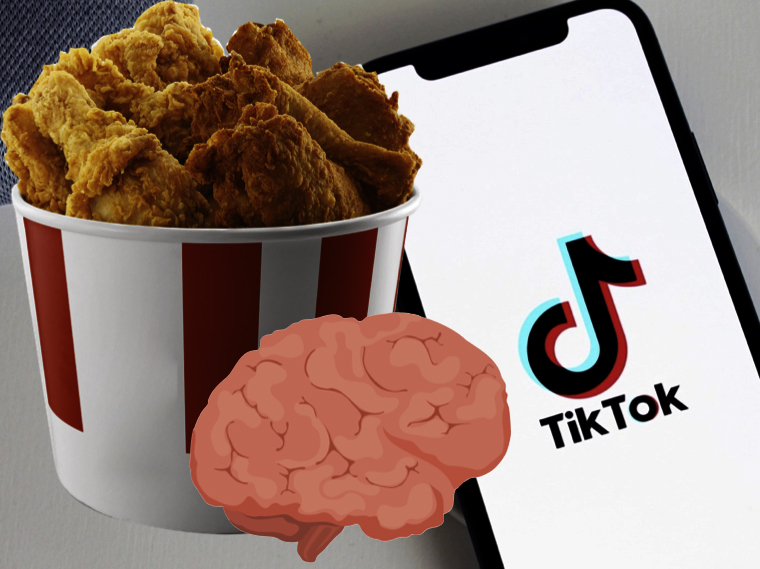
Our environment primes us to seek out instant gratification. We are easily swayed by what is happening in the present, particularly the powerful forces of social media.
Don’t want to feel the pain of doing your work?
Don’t feel like sitting with uncomfortable thoughts and feelings?
No problem!
You can go on TikTok for instant relief.
But the problem with TikTok (and all forms of social media) is that it’s like KFC for the human brain.
It delivers short-term rewards that create long-term costs.
Think of it like this . . .
Those 15 second attention grabbing videos are like deep fried little treats.

And TikTok is an all you can eat buffet where the food has been engineered to give you a massive hit of dopamine. This dopamine-rich food environment is within arms reach and it never runs out. You can eat as much as you want, whenever you want.
The team of TikTok chefs and food engineers are constantly adding more and more greasy food creations to the buffet. With each day that passes, the food options become more novel and extreme (deep fried spam and cheese covered in panko crumbs, anyone?).
But here’s the really creepy part . . .
Because you frequent the buffet multiple times per day, the staff get to know exactly what you like. They know your name, where you live, what you like and don’t like, and the places you like to visit. This means they serve you food that hits the sweet spot every time.
In other words, this machine knows you better than you know yourself.
It’s highly addictive.
It’s easily accessible.
And it’s making you sick.
As Matthew Crawford states in his book The World Beyond Your Head: On Becoming an Individual in an Age of Distraction:
“The media have become masters at packaging stimuli in ways that our brains find irresistible, just as food engineers have become expert in creating “hyperpalatable” foods by manipulating levels of sugar, fat, and salt. Distractibility might be regarded as the mental equivalent of obesity.”
Here’s the thing . . .
You may have noticed that the more you consume from the TikTok buffet, the less you enjoy it. But even though you don’t enjoy it, you can’t stop going back for more. You keep piling your plate with more sickening fried food.
The problem is your brain hasn’t evolved to handle this massive amount of useless content hitting you at such fast rates (with no stop mechanisms in place).
Without good strategies in place to protect yourself, you’re at serious risk.
Your ability to focus and think deeply about who you are and what you want from life will be diminished.
In addition, when you’re constantly bombarded with highly curated, beautiful images of people who have more and better stuff than you, your perception of reality becomes distorted.
As Dr Anna Lembke states:
“We’re now comparing ourselves not just to our classmates, neighbors, and co-workers, but to the whole world, making it all too easy to convince ourselves that we should have done more. Or gotten more, or just lived differently.”

Social media influencers have a lot to answer for. These people set fake, wildly unrealistic standards which no one can live by. They can’t even live by the ridiculous standards they set and promote.
It’s these impossible standards that are making so many people feel anxious, depressed and insecure.
In fact, studies show young people are getting more plastic surgery due to the pressure from social media.
In short, TikTok is making our brains, thinking, and expectations go haywire.
If your TikTok use has got out of control, never fear. The human brain is super adaptable. You can reset things, so you feel less anxious and more in control.
How do you do this?
One way is to engage in a Dopamine Fast.
A Dopamine Fast involves giving your brain a break from constant overstimulation by avoiding all technology (e.g., phone, video games, and social media) for a period of time. Start with just 24 hours.
You might be thinking, “Well, that sounds boring! Why would I want to do that?”
But as Dr Anna Lembke states in her book Dopamine Nation:
“Boredom is not just boring, it can also be terrifying. It forces us to come face-to-face with bigger questions or meaning and purpose. But boredom is also an opportunity for discovery and invention. It creates the space for new thoughts to form, without which we’re endlessly reacting to stimuli around us, rather than allowing ourselves to be within our lived experience.”

Challenge yourself to take a break from the TikTok buffet and be alone with your thoughts and feelings. Notice what comes up for you as you don’t go on your phone (Boredom? Anxiety? FOMO? Freedom?)
It’s a good idea to write down or draw out what you experience on your Dopamine Fast.
After the Dopamine Fast is over, before you quickly run to the TikTok buffet, ask yourself this:
Am I fully in control of my brain?
Or has TikTok hijacked my attention?
If you do choose to go back on TikTok, you need to put limits in place. Easier said than done, right?
It’s your brain up against a big machine of industrialised persuasion.
This is why the Chinese government heavily regulates TikTok. If you’re a teenager in China, here’s how TikTok works:
• You can only use it for 40 minutes a day
• It has opening and closing hours (it opens at 6am and closes at 10pm)
Until our governments start to seriously regulate big tech companies, here’s what I recommend you do:
Because let’s be clear: TikTok does not have your best interests at heart.
Share This:
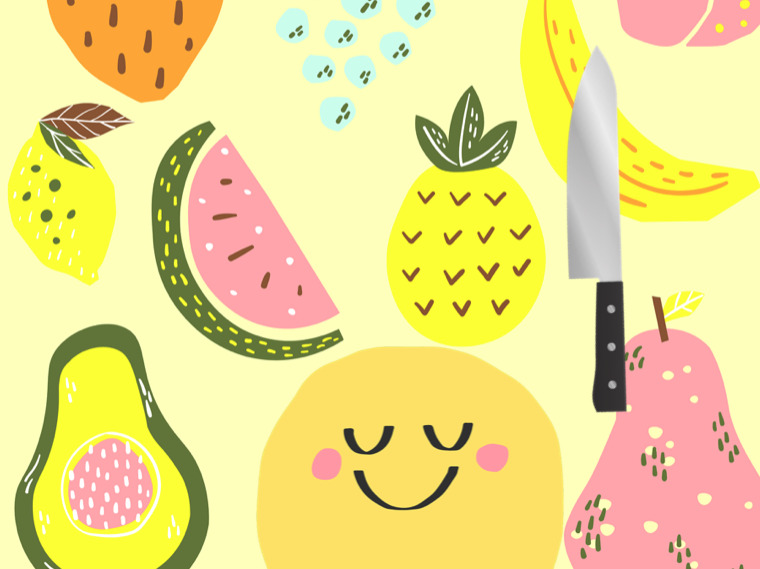
Over the years, I’ve experimented with a range of weird and wonderful stress-busting activities, including yoga, pilates, meditation classes, floatation tanks, massages, acupuncture, and sound healings (to name a few).
I’ll be the first to admit that cash-grabbing wellness gurus and advertisers have sucked me in.
In our capitalist culture, we’re sold this idea that in order to relax, we need to spend big dollars. But I now realise that the best relaxation experiences are cheap or free.
I’ve created rituals around cooking that help me stay calm, grounded, and focused throughout the day.
These days, cooking is my number one way to relax. My kitchen is my happy place, and it can be your happy place, too.
Perhaps this sounds a bit strange. But hear me out.
I haven’t always found cooking to be relaxing or particularly enjoyable.
Being half Italian, I used to get involved with the occasional food tradition, such as tomato sauce-making day. But it wasn’t like I grew up with the delicious smells of homecooked food wafting through the house.
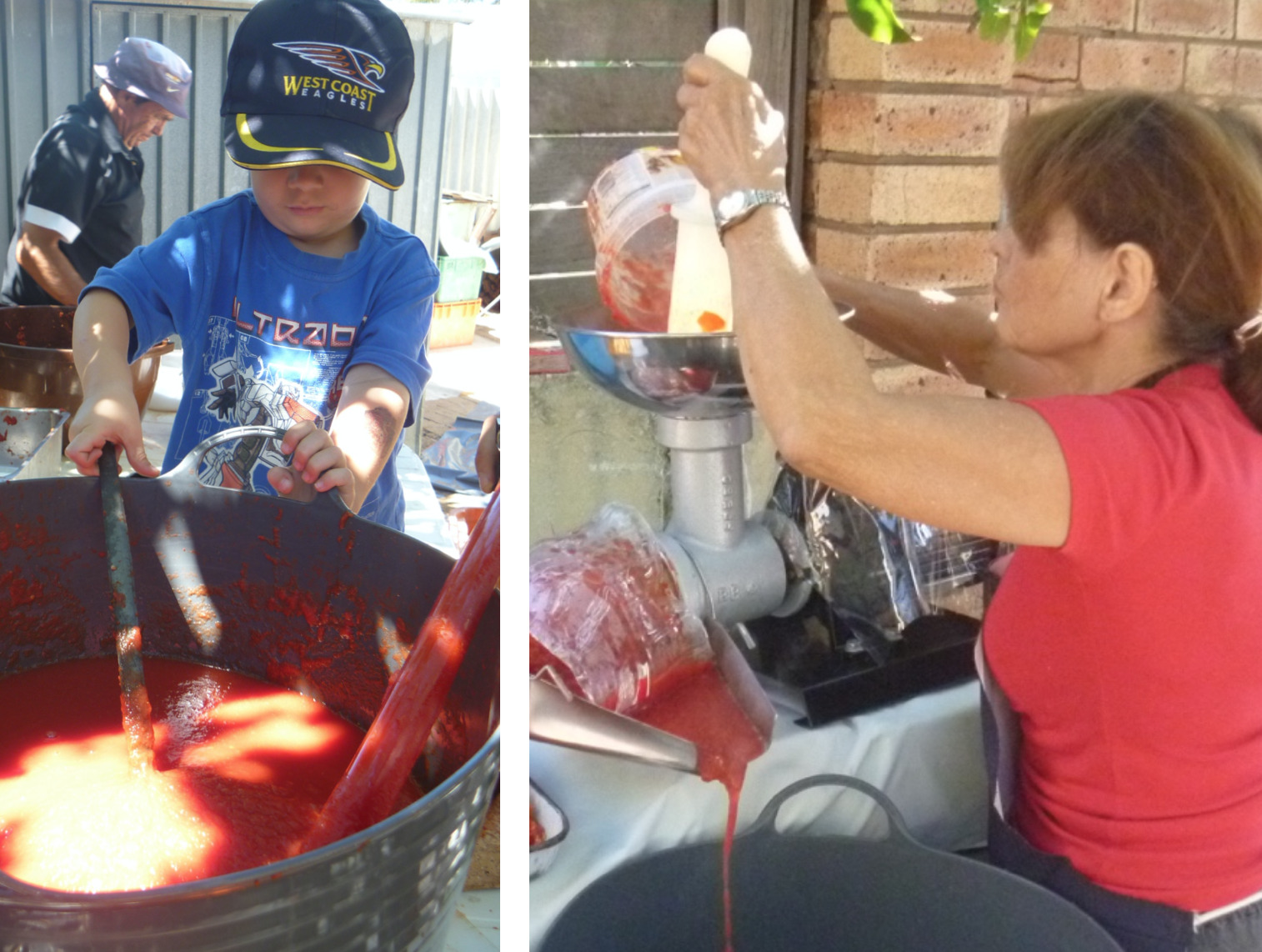
My teenage years and early twenties were filled with processed junk foods: a dizzying array of Hungry Jacks combos, greasy fish and chips, and takeaway meat lovers pizzas.
Cooking was a relaxation practice I stumbled upon much later in life.
Since upping my kitchen game and trading the expensive wellness activities for a sharp knife, solid chopping board, and fresh vegetables, my savings and confidence have grown.
To emerge from the kitchen in a calm and tranquil state, a few conditions have to be in place:
1. You cannot feel rushed
2. Your kitchen counter must be clean and clutter-free
3. You need a sharp knife to chop with
4. Your phone must be out of sight (like most things in life, it’s best not to multitask)
If these conditions are met, cooking can feel like a meditation or an empowering yoga class.
I’m not the only person who feels this way.
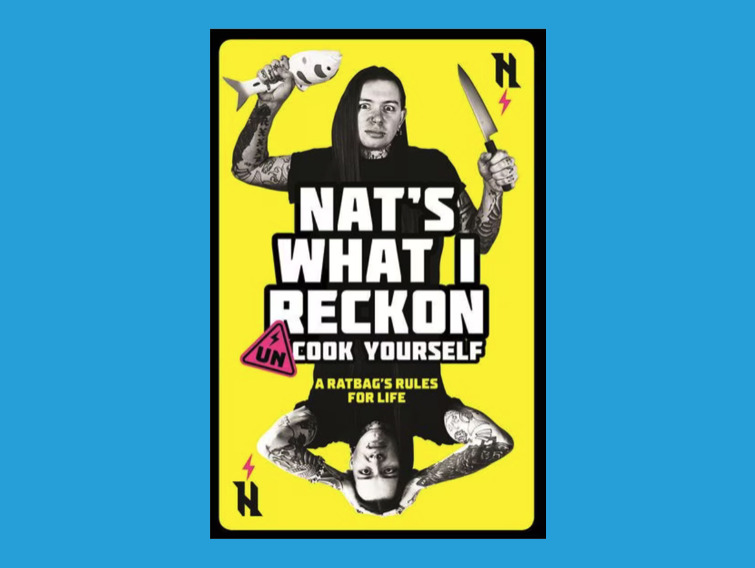
In the book ‘Uncook Yourself: A Ratbag’s Rules for Life’, Nat’s What I Reckon shares how he cooks his way through tough times. He writes:
“I reckon getting in the kitchen and un-cooking yourself from the tough moments in your head every now and then is a way better self-help routine than throwing five grand at some short-lived back pat from a cash grabbing blowhard at a self-help seminar just to tell you you’re not doing life right.”
One reason is you need to focus your mind.
When chopping with a sharp knife, you must pay attention to what you’re doing. If you get distracted, and I have (many times), you might pay the price with a cut to the finger.
Chopping is also a repetitive activity that delivers an immediate outcome. One minute, the bok choy is on the chopping board in full form; the next, it has been chopped and is ready for tonight’s stir-fry.
Cooking also requires you to slow down.
When you’re online, you tend to jump around in a frenzy. But when you’re cooking, you have to follow a recipe step-by-step. This requires focus. This focus helps to clear your mind.
Cooking also gives you a sense of control, power, and agency. As food journalist Michael Pollan says:
“Eating out breeds helplessness, dependence and ignorance, and eventually, it undermines any sense of responsibility.”
When you cook, you’re in control of the process (not some big corporate fast food company). Plus, compared to that commodified wellness experience, cooking is super cheap (all it costs is the price of a few ingredients).
It also produces a nourishing meal at the end. That meal will give you energy, help regulate your mood, and keep you calm and steady.
In the book ‘The Food Mood Connection’, Uma Naidoo argues that to decrease anxiety, you should pay attention to what you’re eating. She writes:
“A crucial part of battling anxiety is making sure your diet is full of foods that are calming and free of foods that put you on edge.”
Fast foods and highly processed foods. These foods (e.g., greasy hot chips and baked goods) are problematic because they lack fibre and the fragile micronutrients and phytochemicals needed for good brain health.
Naidoo recommends increasing your fibre intake by consuming more plants and whole foods, such as beans, brown rice, baked potatoes with the skin on, broccoli, pears, apples, and oats.
A few years ago, I delivered a talk called ‘Rediscovering the Ancient Art of Thrift’ at a local library. In my presentation, I shared the thrifty practice of avoiding eating out and cooking meals at home.
At this point in the presentation, an elderly gentleman put up his hand and said:
“But vegetables are expensive. Why not just get McDonald’s? It’s cheap, and there’s no cleaning up at the end.”
I immediately thought of a friend who, at the time, ate only McDonald’s (for breakfast, lunch, and dinner). His housemates had confided in me that his feet had developed a pungent odour.
Although my diet was far from perfect, I was concerned. If my friend kept going down this path, I could see him heading for serious trouble.
Fast forward a year: How was my friend doing?
He was not well.
He had put on a significant amount of weight and seemed depressed, rarely leaving his room except to get his next McDonald’s meal (back in those days, there was no Uber Eats).

I explained to this elderly gentleman in the library workshop:
“Maybe you’ll save a bit of time and money in the short term [buying the fast food], but eating processed food will cost you down the track. It will cost you in medical bills and poor health. Your quality of life will suffer.”
He nodded, but I could tell he wasn’t entirely convinced.
Until you’ve cut out the processed junk food, allowed a couple of weeks for your tastebuds to readjust, and developed the habit of home cooking, it’s easy to be sceptical. After all, we live in a world that values convenience. Opening an app, pressing a button, and having dinner delivered to your door in less than 20 minutes has some definite appeal.
But every time you order Uber Eats, you miss out on a valuable opportunity to practice slowing down and calming your mind. You also undermine your cooking skills.
If you haven’t developed the habit of cooking or cooking makes you feel anxious, there are a few simple things you can do to cultivate calm and confidence in the kitchen:
Cooking is a messy process. While I may start with a clean kitchen bench, it quickly becomes a mess. That’s how the process goes (I try to clean as I go).
It’s also okay to mess up a meal. Not every meal is going to be an absolute winner. In ‘The Four Hour Chef’, Tim Ferris encourages the reader to see meals that don’t work out as cheap cooking classes. Learn the lesson and move on.
When you think of cooking as one activity, it can feel overwhelming. I divide the cooking process into two stages:
1) Preparing the mise en place: chopping vegetables, taking out utensils, etc, and
2) Pulling it all together: cooking the dish.
In the morning, I take out all the ingredients for a dish so they are ready to go when I need to take a break from my work. I chop earlier in the day and cook the dish in the afternoon/early evening.

If I’m overwhelmed by the idea of chopping vegetables, I break it down to chopping just one vegetable at a time. I’ll say to myself:
“Just chop the capsicum. That’s all you need to do.”
It’s not fun chopping with a knife with a dull blade. A sharp knife combined with a lovely chopping board makes all the difference.
Learning basic chopping skills is a game changer. With the proper technique and a sharp knife, there’s no need to worry about cutting yourself. You can chop with ease.
I took a chopping skills course with the online cooking school Rouxbe, but you can find YouTube videos teaching you good chopping techniques.
You’re not running a restaurant. You don’t have to rush to get meals out to hungry customers. Take your time and enjoy the process of chopping each vegetable.
If approached with the right mindset, cooking can deliver a sense of calm and ground you in the present moment. You also get to experience the mental and physical benefits of a nourishing home-cooked meal. The bonus extra is saving a bit of money.
So, what are you waiting for? Pull out some ingredients and start cooking today.
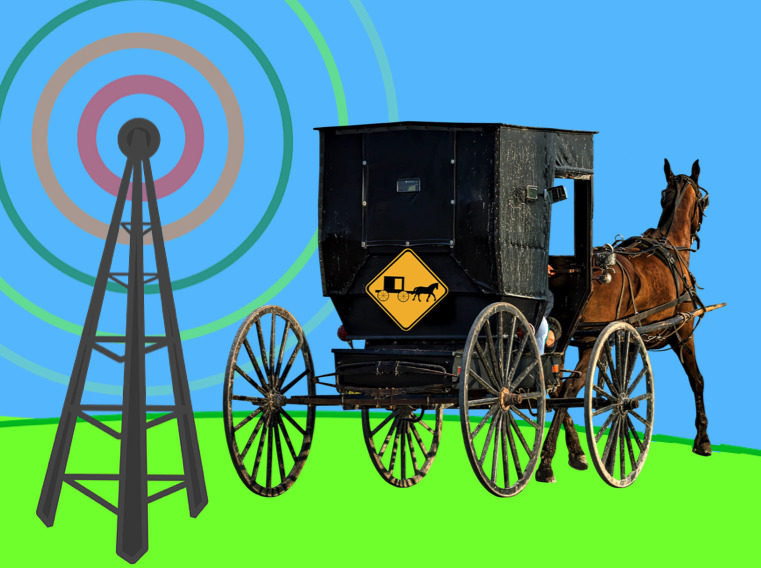
If I’m honest with myself, there was a time when technology was doing me more harm than good.
On Facebook, I frequently fell into the comparison trap (comparing myself to people who had posted delicious dinners, amazing holiday photos, etc).
On Twitter, I’d get baited by trolls (and I’d foolishly take the bait).
Throughout the day, I’d constantly check my phone and email, which left me feeling jittery and chaotic.
Big Tech was constantly hijacking my time, energy, and attention. Every time I retreated to my devices for a quick shot of dopamine, I moved further away from my goals. I didn’t like this, and I knew something needed to change.
Over the past three years, I’ve implemented many practices to regain control of my time, energy, and attention (including deleting all social media).
These practices have made a big difference in my life. But I’m well aware that not everyone feels the same way I do about Big Tech, nor are they in a position to be able to delete all their accounts.
Following a school presentation, I spoke with a small group of year 8 students. I shared with them that I didn’t use any social media, to which a year 8 girl quickly chimed in:
“My grandma has Facebook. What’s your excuse?”
Her words struck me like a bolt of lightning. I didn’t know what to say.
It highlighted how adopting these apps is the norm for a young person.
When everyone else has a smartphone and is using social media (including your parents and grandparents), why would you question using them?
I couldn’t forget the year 8 girl’s words. While I appreciated her candidness, it left me slightly disturbed.
At the same time, it increased my motivation to resist Big Tech. I started searching for role models: people actively resisting Big tech and this hyperconnected, fast-paced way of life.
One community kept popping up in my research: the Amish.
The Amish are often portrayed as being technologically impaired. A classic example is Weird Al Yankovic’s music video Amish Paradise (a parody of Coolio’s mega-hit Gangsta’s Paradise).

In this video, Weird Al sings:
I never wear buttons but I got a cool hat
And my homies agree I really look good in black, fool
If you come to visit, you’ll be bored to tears
We haven’t even paid the phone bill in 300 years
But we ain’t really quaint, so please don’t point and stare
We’re just technologically impairedThere’s no phone, no lights, no motorcar
Not a single luxury
Like Robinson Crusoe
It’s as primitive as can be
While the Amish still mainly travel by horse and buggy and shun many modern technologies, such as televisions, radios, and cars, they are not ‘technologically impaired’ as Weird Al makes out.
When it comes to cultivating healthy digital habits, there is a lot we can learn from the Amish.
The Amish have a set of strategies that guide the adoption and use of different technologies. These strategies have allowed them to avoid being pawns for the goals of Big Tech companies, which make massive profits by seizing people’s attention.
I recently read a fascinating book called Virtually Amish, written by Dr Lindsay Ems. For her PhD research, Dr Ems spoke to Amish people about their relationship to modern technology (e.g., smartphones).

She argues that the Amish take control of their tech tools and thrive. Through adopting similar practices, we can thrive, too.
Below, I share how you can thrive by emulating Amish practices and beliefs around technology:
The Amish are not technophobes. They are ‘technoloselectives’.
They carefully consider the tech tools they’ll adopt and their functionality, tweaking them to help them achieve their goals.
The Amish don’t mindlessly purchase the latest gadgets and gizmos. Instead, they think about their values and goals and how the technology could cause unintended harm to themselves and the wider Amish community.
What are your goals?
Do your tech tools help you achieve them, or do they distract you from them?
The Amish are guided by their values (i.e., the things that are most important to them). Their values underpin everything they do.
So, what exactly do Amish people value?
• Community
• Connections with others
• Living a simple and slow-paced life
• Living a spiritually rich life
• Being self-sufficient
The Amish use these values to guide their adoption of technology.
An example of this can be seen with the arrival of the home telephone (not smartphone). Dr Ems shares how the Amish decided to ban the telephone from being inside the family home.
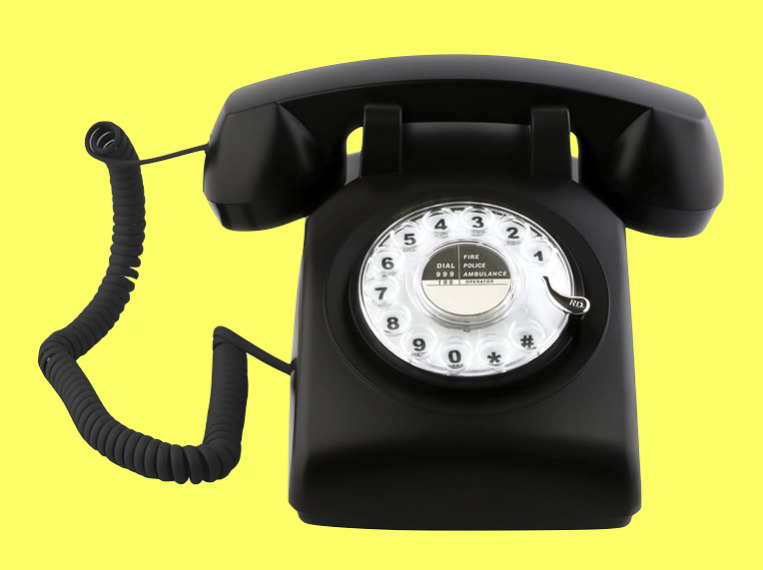
This ban came about after careful consideration and reflection on their values. The Amish value connections with family, friends, and the community. They don’t want to be the kind of person who interrupts a conversation by answering a telephone call. For this reason, telephones are located outside Amish family homes or nearby.
What are the things that are most important to you?
How does technology impact on those things?
Does it enrich those things or diminish them?
The Amish understand that technology can cause harm. Subsequently, they intentionally delay adopting new technology until they see its impact on others.
Does it destroy family life? Does it wreak havoc on their ability to pay attention and distract them from their spiritual life?
If so, the technology threatens their culture and religion, and for these reasons, it should be avoided.
Before adopting a piece of technology, the Amish need to be clear about two things:
1) The functionality of the technology (what it can do)
2) The potential social impacts of the technology
Once they deeply understand these things, it is then decided whether the technology is adopted or not.
It may come as no surprise that Amish people view the smartphone as an incredibly dangerous innovation. Many Amish communities have bans on this device.
How do you feel after spending time on social media?
Have you seen things posted on social media that weren’t true or were exaggerated?

When an Amish person wants to use a new technology, that technology will go through a formal decision-making process.
The community (in particular, the leaders) will consider the future with this technology. They’ll try to imagine how the technology could change their way of life.
Questions the Amish reflect on include:
• What are the advantages and disadvantages of the technology?
• What might come with it that we might not anticipate?
• Could someone get addicted to it?
• Is it a need or a want?
• Can the technology be restrained?
In her book Virtually Amish, Dr Ems provides the example of an Amish business owner asking the community leaders if he could have permission to use a label maker for his business.
After careful consideration, the leaders ruled label makers could be allowed for the following reasons:
• They are not addictive
• They can’t be used for recreational purposes (e.g., playing games or entertainment)
Think of a new technology (device or app) you want to adopt. Could it become addictive?
Many Amish people believe the issue is not whether you use a smartphone or social media but how you use it. It’s important that the Amish remain in control of their use of tech and place limits on it.
It’s also important that the technology is not visible (i.e., you don’t pull your smartphone out in Church or during a conversation). Being discrete in the way one uses technology shows respect for Amish values.
How do you use the tech in your life?
Are you in control of your use?

Amish people think about not just how they use the technology but what kind of person they become when they use it.
This point resonated with me deeply. I can’t say I’ve always liked who I become when I use certain technology.
A few years ago, I babysat my friends’ children when my friends went out for a kid-free meal. I look back and cringe when I think about how the experience unfolded.
Before going to my friend’s place to start babysitting, I got into a heated text discussion with some people in a group chat. Things were said that upset me.
For most of the night, I was on my phone, texting back and forth, not present with these young children. At one point, the little boy tugged on my arm to get my attention. “Aunty Jane, come play!” he said.
What can I say? I felt terrible. This certainly was not my finest moment. I had become the kind of caregiver I am usually quick to judge: distracted and disengaged.
I vowed to avoid trying to resolve issues by text and leave my phone at home next time to be fully present with the kids.
When you use social media, what sort of person do you become?
The Amish take modern tech tools and modify them to help them achieve their goals.
The plain mobile phone is an example of this. Amish people have created a mobile phone that can only make calls. It doesn’t have a camera, games, access to the Internet, or the ability to send text messages.
Similarly, the plain computer allows Amish to make spreadsheets, do word processing, and construct simple drawings. This allows them to complete tasks without being distracted by other things.
In other words, the Amish create what David Kadavy (author of Mind Management, Not Time Management) would refer to as sticky tools. A sticky tool allows you to stay focused on a task without getting distracted.
What sticky tools could you consider adopting (e.g., a basic flip phone and Internet blocker app)?
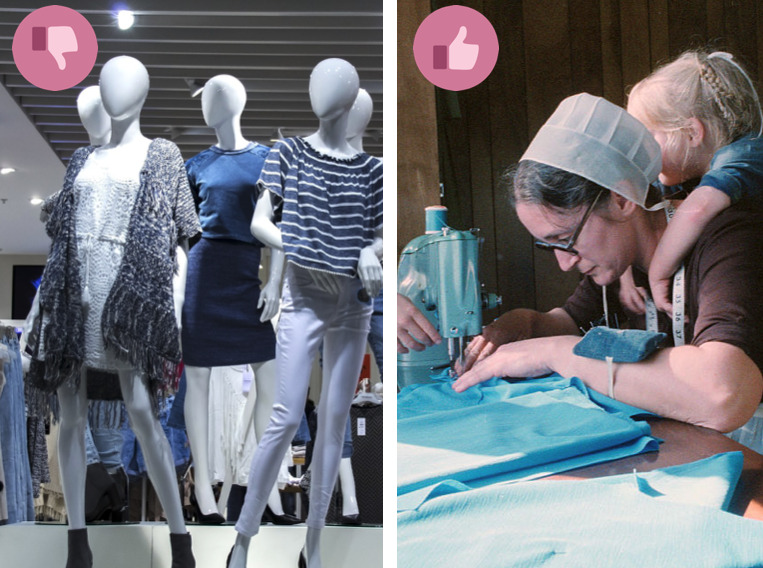
The Amish take pride in growing their own food, raising barns, baking their own bread, tinkering with robotics, inventing, and making their own clothes. They are not big consumers, but they embrace a simple lifestyle and encourage human creativity.
In the modern non-Amish world, many of us are doing the polar opposite of this. We have fallen into the trap of consuming content mindlessly online (e.g., watching people bake bread instead of baking our own bread).
Don’t get me wrong—the Internet is an excellent learning tool to help us build our skills. I have turned to YouTube for many instructional videos on how to make and fix things. But doing this requires discipline because it is all too easy to get derailed by other distracting videos.
The bottom line is this: the more time we spend online, the more ads we are likely exposed to and the more our consumptive desires are stirred up. Is it any wonder so many people feel so dissatisfied with their lives?
Instead of mindlessly consuming, what can you create today?
The Amish embrace tech with inbuilt friction. In fact, inconvenience is considered a virtue.
Dr Ems shares that many Amish technologies intentionally contain ‘speed bumps’ and ‘friction’. The reason for this friction is to prevent Amish people from wasting time on the device.
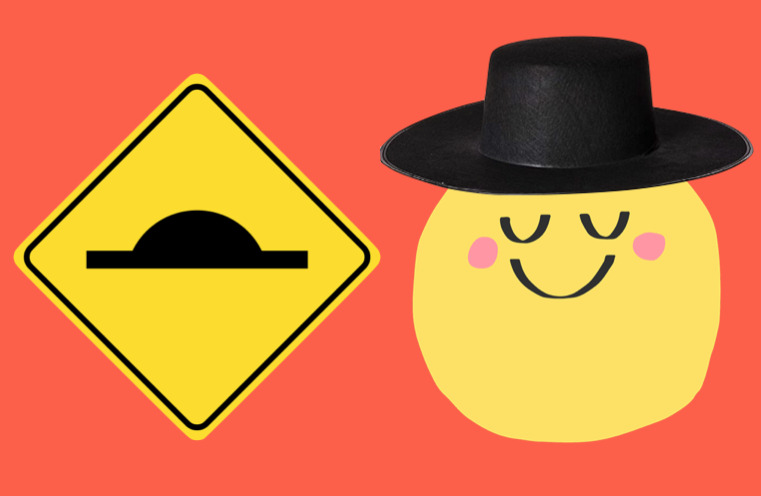
I’ve found this is one of the positives associated with using a ‘basic phone’.
Last year, I experimented with using a basic flip phone with limited functionality (I could only make calls and send texts). Texting on this phone was so painfully slow that it made me want to avoid getting into long text discussions with people. It was easier to pick up the phone and call people.
Using a smartphone to text your friends may be easier than making a phone call, but as the Amish strongly believe, easier is not always better.
How can you build friction into your tech use?
Can you embrace analog alternatives to decrease your screen time?
How much control do you have over your time, energy, and attention? As Chris Bailey writes in his book How to Calm Your Mind, “On the Internet, our intentions very quickly slip from our grasp.”
If you want to thrive online and offline, consider adopting some of the tech habits of the Amish. By limiting their tech use, the Amish have been able to remain mentally free and protect their way of life.
If more of us adopted Amish tech practices (e.g., being intentional with our tech use and placing limits on it), we’d most likely feel calmer and less anxious. We’d also spend more time engaged in activities that bring us joy and are aligned with what we value.

Where I live in Perth Western Australia, there’s an event that happens once a year that demands your attention like no other: The Royal Show.
At this show, there are extreme rides, giant fluffy toys to be won, baby animals you can pat, and much, much more.
Wherever you are in the world, you probably have an event like this, too. And if you do, chances are there is something at the show that is completely attention grabbing . . .
I’ve come to see show bags as being an important metaphor for modern life. Let me explain . . .
When I was a child, I couldn’t wait for the show bag catalogue to be released. I would spend hours trawling through the catalogue, carefully selecting my show bags.
These were big and important questions for my 6-year old brain.
When we finally got to the show, my parents and I would wait in the queue at the frenzied show bag stall. I remember looking up at the display of all the bright colourful show bags and feeling really excited.

If you break down the contents of a show bag, there’s a bit of a formula to them . . .
There’s usually a range of ultra-processed sugary and salty snack foods and a bunch of novelty toys.
If you take a good hard look at the contents of most show bags, there’s nothing that’s really nourishing in there. It’s just poor-quality junk food. Or cheap plastic rubbish that is destined for landfill.

As I got older, I wised-up to these overpriced show bags containing mostly garbage. I stopped buying them.
Now you’re probably wondering, “What do show bags have to do with being able to study effectively? How is this a metaphor for modern life?”
I’ve come to see show bags and the Royal Show as being similar to smartphones, specifically social media apps.
If consumed frequently (even just in small doses), they are potentially damaging to our minds, bodies, and the planet.
Think of it like this . . .
But if you were to have a show bag every day, would you enjoy it as much?
Probably not.
According to addictions expert Dr Anna Lembke, if you consume too much of a pleasurable thing, it makes that thing less pleasurable.
This is why they say, “Less is more”.
There’s a reason the royal show only happens once a year and you can’t buy show bags at the local supermarket. It’s a special occasion. Show bags are designed to be a special treat.
It wouldn’t be so special if it happened all the time. After a while, the novelty would wear off. You’d get bored.
As you emptied the contents of your 50th Bertie Beetle show bag or entered the Gravitron for the 100th time, you’d be like “Meh. Big deal”.
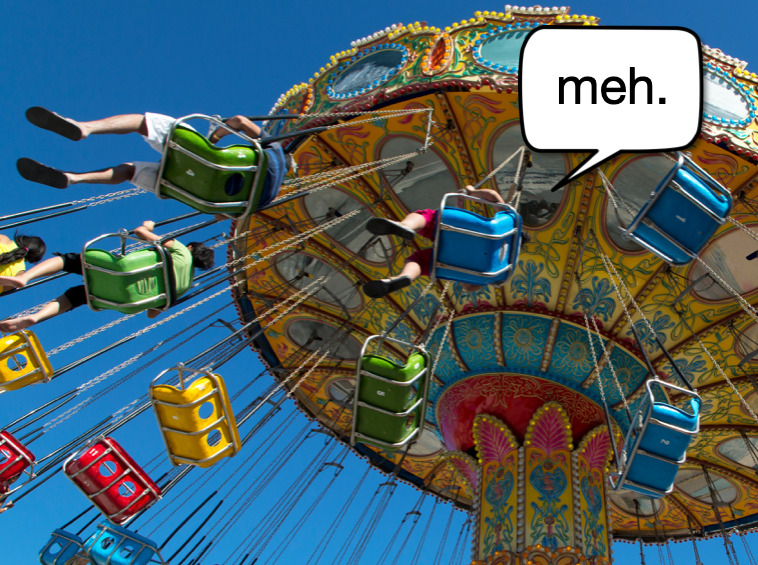
If you don’t believe me, next time you’re at the show take a look at the carnies (the carnival workers). They’re not having fun in sideshow alley. They’re tired. They want to be packing up the rides and getting out of there.
The point is the Royal show and show bags are great once in a while but not all the time.
It’s the same deal with social media. Spending too much time on there isn’t doing you any good.
Switching rapidly from doing your work to your phone and then back again slows you down. It impairs your ability to think and learn. It makes you feel scattered and anxious, too.
It’s time to start thinking of TikTok, YouTube videos and text notifications as the sugary treats, salty snacks, and novelty toys contained in show bags. Nice to have occasionally, but if consumed in large quantities, you’re going to suffer.

Just because everyone is eating Bertie Beetles all day every day doesn’t make it healthy. It doesn’t make this behaviour okay. It just means we’re going to end up with a very sick society.
We can do better. But this means we need to place limits on how much we consume.
When you study with your phone within arm’s reach that’s like having a never-ending show bag of junk food next to you. You can’t fully focus your mind on the task at hand because a part of your brain is thinking about the tasty treats in the bag.
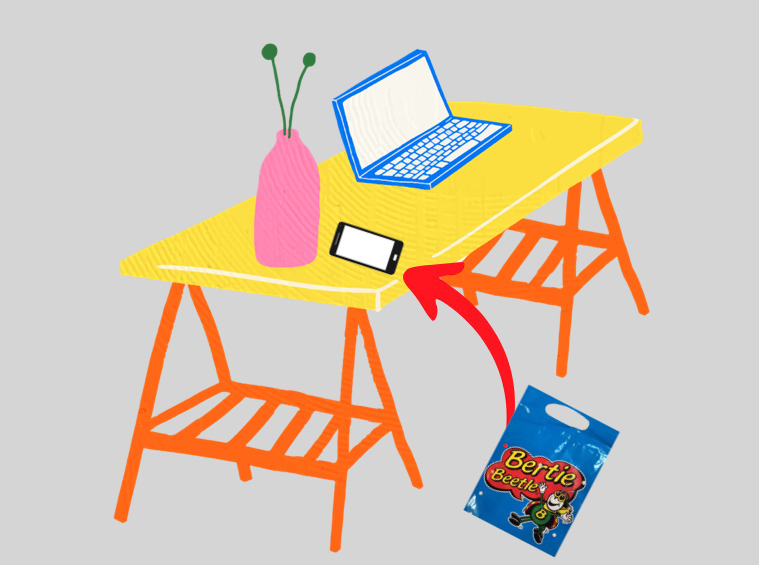
No matter how hard you try not to think about the treats, you can’t help but think about the treats!
It’s not your fault that you can’t resist checking your phone for the treats that await you. Social media apps are designed to be dopamine dispensing machines. Addictive to the core.
How can you fill up on the good stuff (i.e. the stuff that is going to add real value to your life)?
I recently developed a powerful tiny habit. It may sound simple but I highly recommend it. The habit is this . . .
When I notice my phone is in my workspace, I will pick it up and put it away from my body in another room.
In fact, I have a specific home for my phone: it lives in pocket number 1 of a vertical wall hanger in my dining room. I have set times when I can check my phone. But outside those times, my phone stays in pocket 1.

When I put my phone in the pocket, it’s like I’m putting the show bag away on the top shelf of a cupboard and closing the cupboard door. Out of sight is out of mind.
I recommend you give it a shot.
When you first start implementing this habit, you will probably feel a strong urge to grab your phone and look at it. But over time the urge to check your phone will pass.
The thing about focus is it’s like a muscle. You can strengthen it over time by engaging in simple practices, such as putting your phone away when it’s time to do your work and engaging in meditation.
Doing these things may be more difficult than dipping into a show bag or watching TikTok videos, but it’s probably going to deliver far more benefits in the long run.
But most importantly, when you fully focus your mind on what you need to do, there is something inherently satisfying about that. It brings you more joy and satisfaction than any 15 second video could ever deliver.
Image Credit
“Ekka 2004 Showbag Pavillion” by Dr Stephen Dann is licensed under CC BY-SA 2.0 .
Dr Jane Genovese delivers interactive sessions on learning to learn, combating procrastination, exam preparation, how to focus in the age of distraction, habit formation and much, much more!
Get FREE study and life strategies by signing up to our newsletter:
© 2024 Learning Fundamentals